I’ve played through this classic game before, but apparently I’ve never played it through Steam. So for the sake of completeness I decided to revisit the game so I can add another notch to my Steam bedpost. Any excuse to play through this fantastic sequel again.
Famously based on and developed by the students that created Narbacular Drop, Portal was a game changer. Probably the best game Valve had put out in a long time, it created a challenging experience, with an engaging story, and a fantastic song by Jonathan Coulton which gamers wouldn’t stop singing for years.
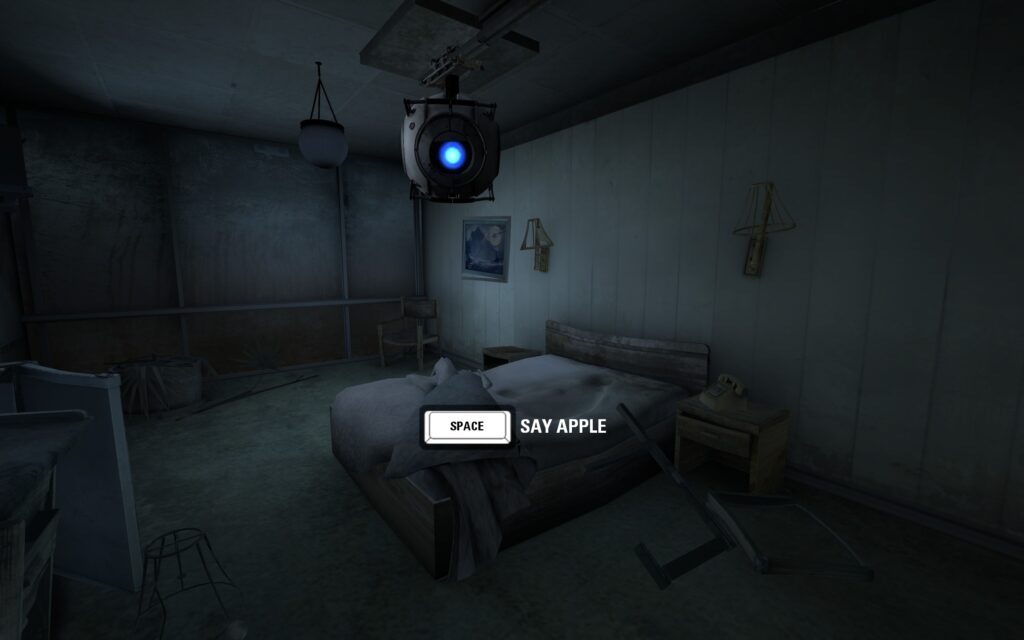
When the sequel was announced, I couldn’t wait to get my hands on it. There were some minor doubts. This game was to be cross-platform, and thus needed to avoid puzzles that would be too hard to complete using a gamepad. Would this game be a dumbed down version of its prequel?
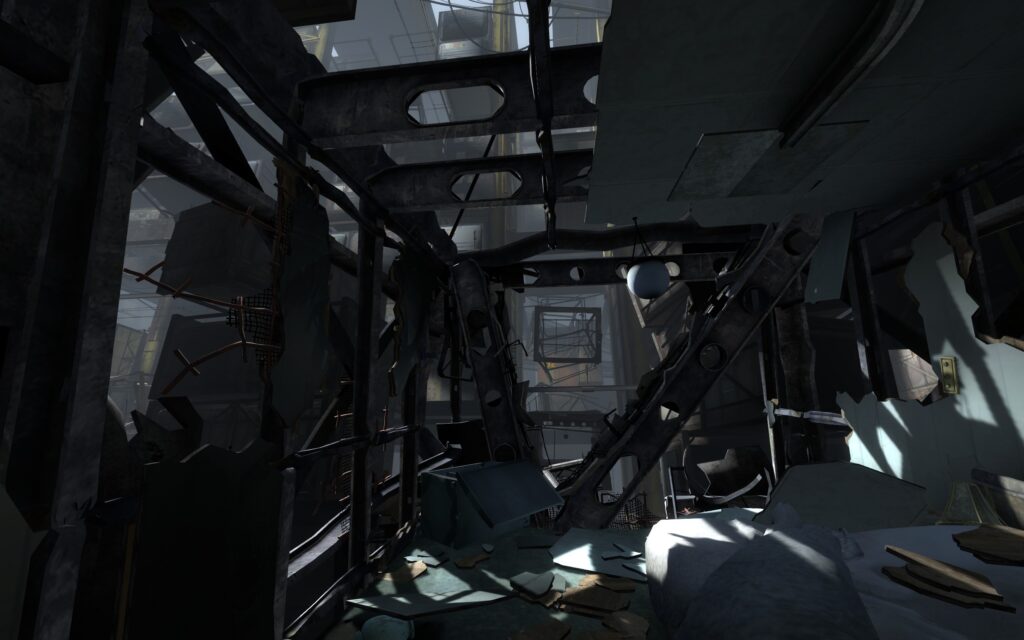
Thankfully, while the portal puzzles were simpler, it got around this by adding new mechanics in the form of gels. This was a good choice, since it allows the game to create new and interesting puzzles rather than rehashing the puzzles from the original game.
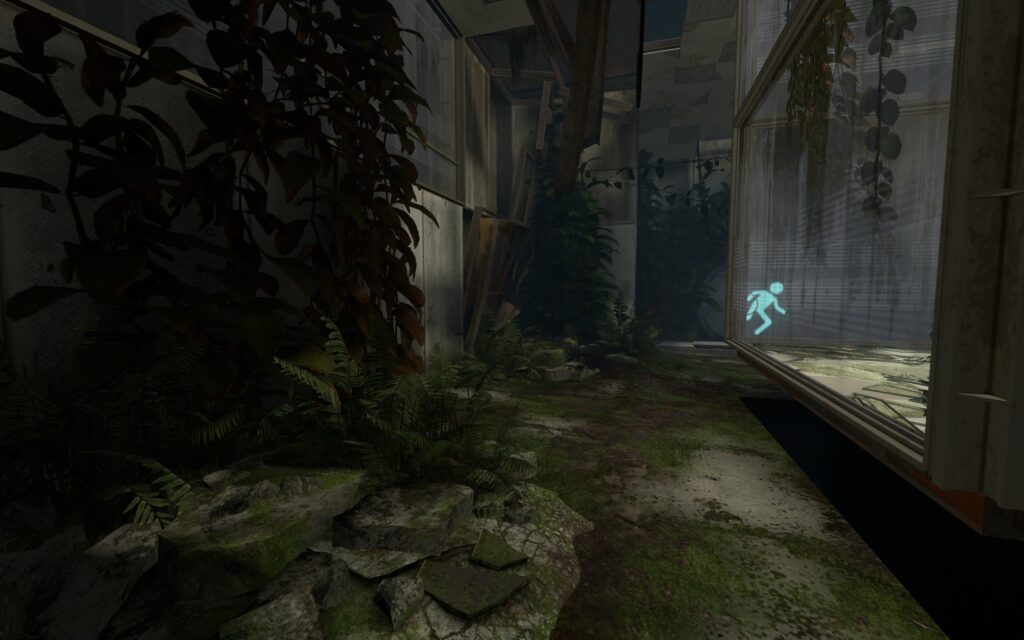
The three gels added are the blue Repulsion Gel, which causes objects to bounce on its surface; orange Propulsion Gel, that causes objects to slide along it really fast; and white Conversion Gel, which coats a surface in moon rock allowing you to use it to create portals. The puzzles integrate these gels well with the portal mechanics, helping them feel part of the same world.
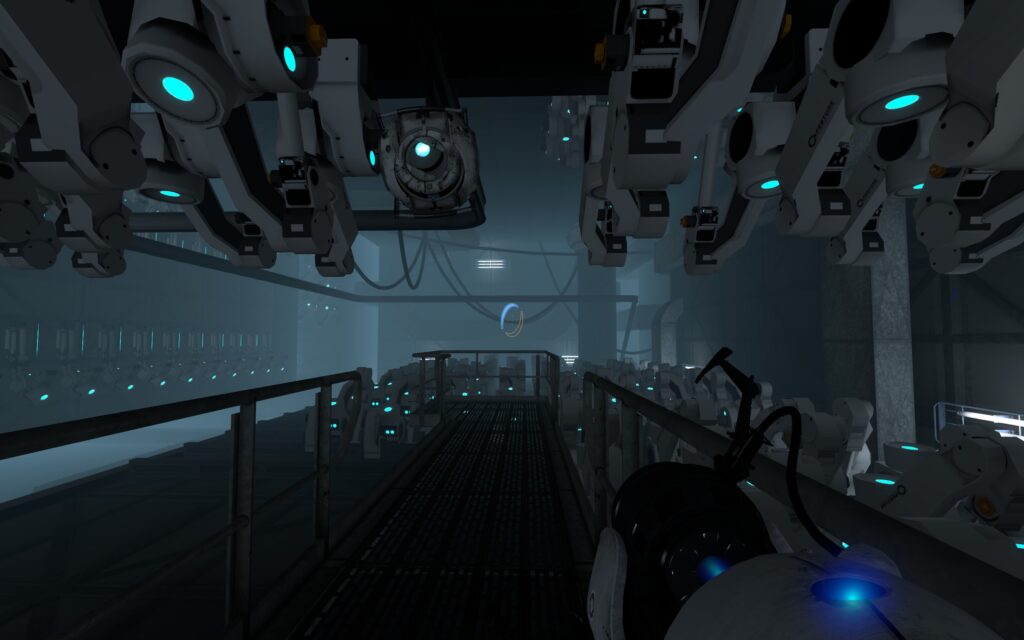
None of the puzzles in the game feel illogical. You can always figure out a solution to a level and, while there were a few times I was completely stumped, I would eventually gain the satisfaction of figuring things out.
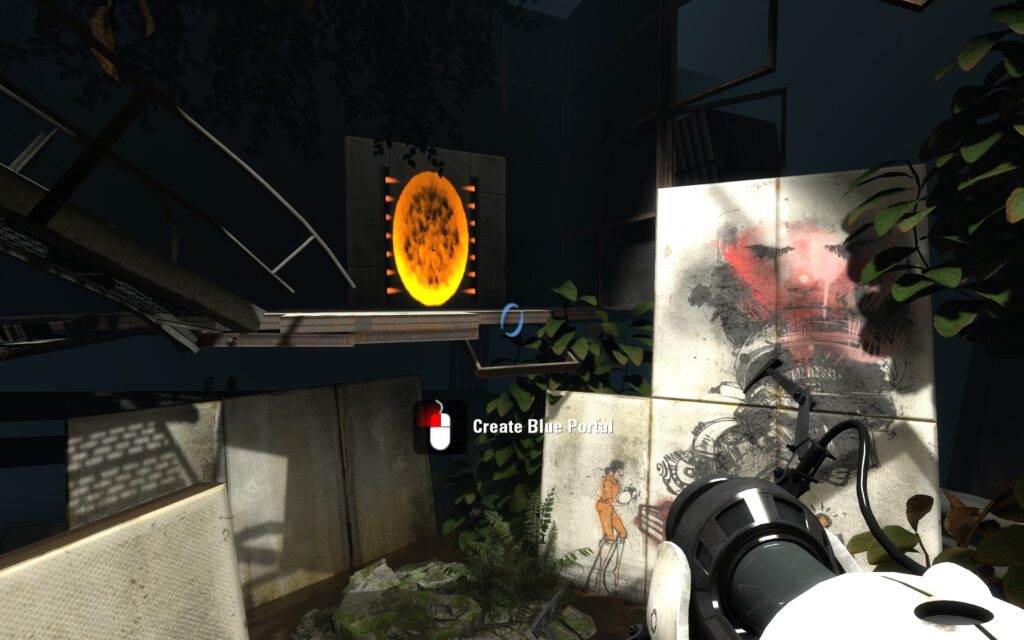
Like the first game, Portal 2 is essentially a rail shooter except the shooting is replaced with puzzle solving. Unlike the first game, you aren’t just simply going through puzzle chambers. From a pure gameplay/metagaming perspective it is structured in the same way. But a lot of the entertainment in the game comes from its presentation.
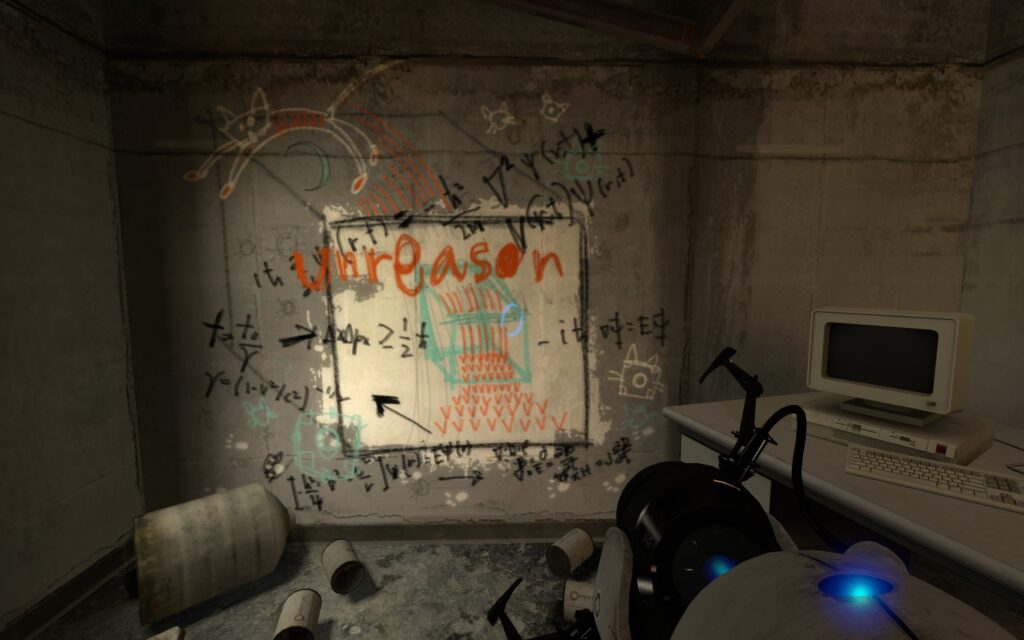
You play Chell once again, only this time waking up some time in the far future. Aperture Labs is falling apart since the death of GLaDOS. Gone are the clean test chambers of the original game. Rooms are smashing into each other, chambers are still being constructed after you enter them. The lab is abandoned and scarred, only robots running around not knowing what to do.
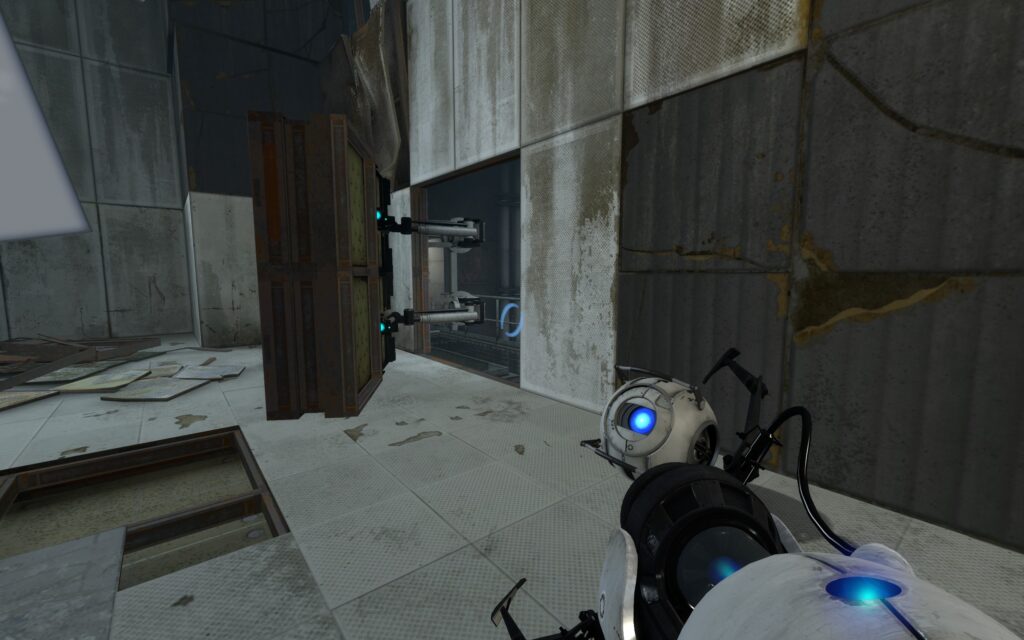
You are joined by Wheatly, an AI-powered robot played by Stephen Merchant, who says he is there to help you escape. Merchant is the perfect casting choice for this role. His accent and humour endears you to the robot, and he’s probably the reason that the only time I had to stop playing a game for at least ten minutes because I was laughing so hard.
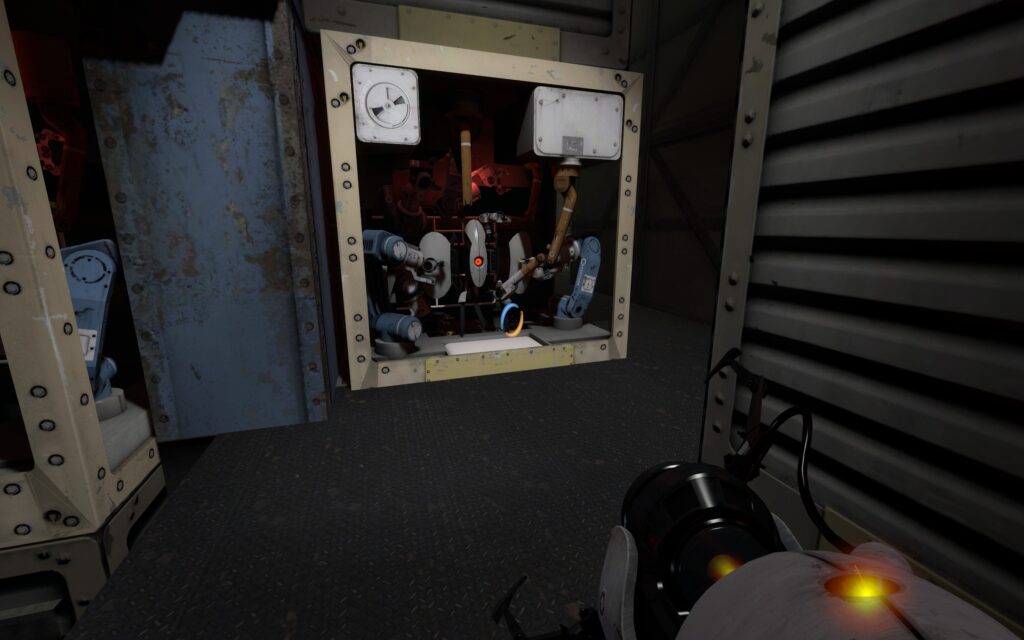
So it hits hard when he replaces GLaDOS, played once again by Ellen McLain, and ends up become the evil AI antagonist of the game. You end up teaming up with GLaDOS, now powered by a potato battery thanks to a sick joke by Wheatly. With GLaDOS you end up in an older facility where the gels were being developed. This is the part where the puzzles deviate from the purely portal-based puzzles of the first game.
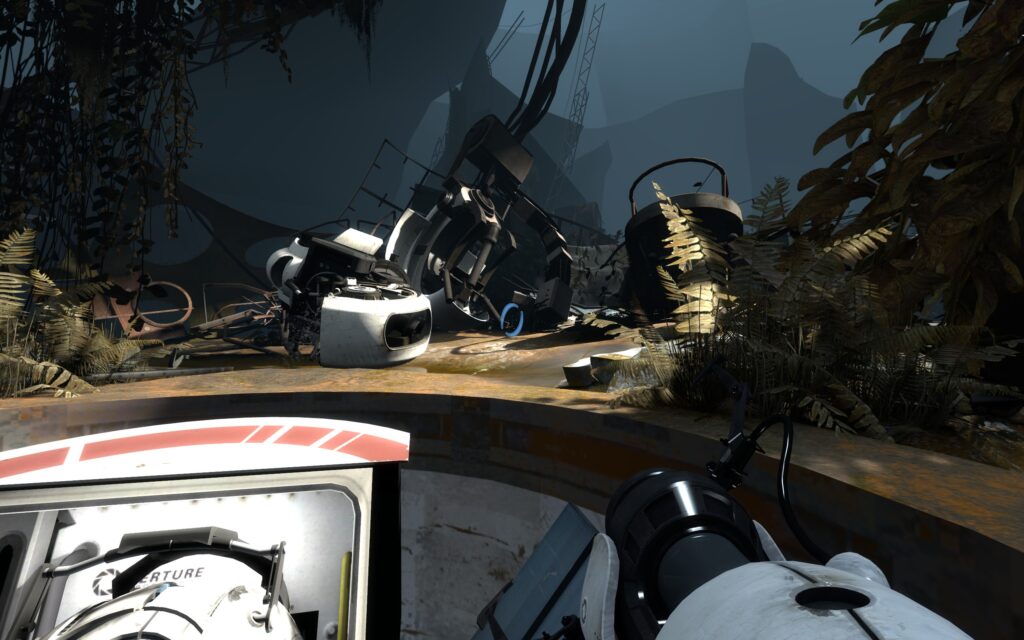
It’s also where we are introduced to the voice recordings of Cave Johnson, founder of Aperture Science. This is probably the character most people remember, in part because he is played by the amazing J.K. Simmons. His performance is both hilarious, terrifying, and at times reveals a little of the unethical and immoral practices of the company, as well as the true origins of GLaDOS.
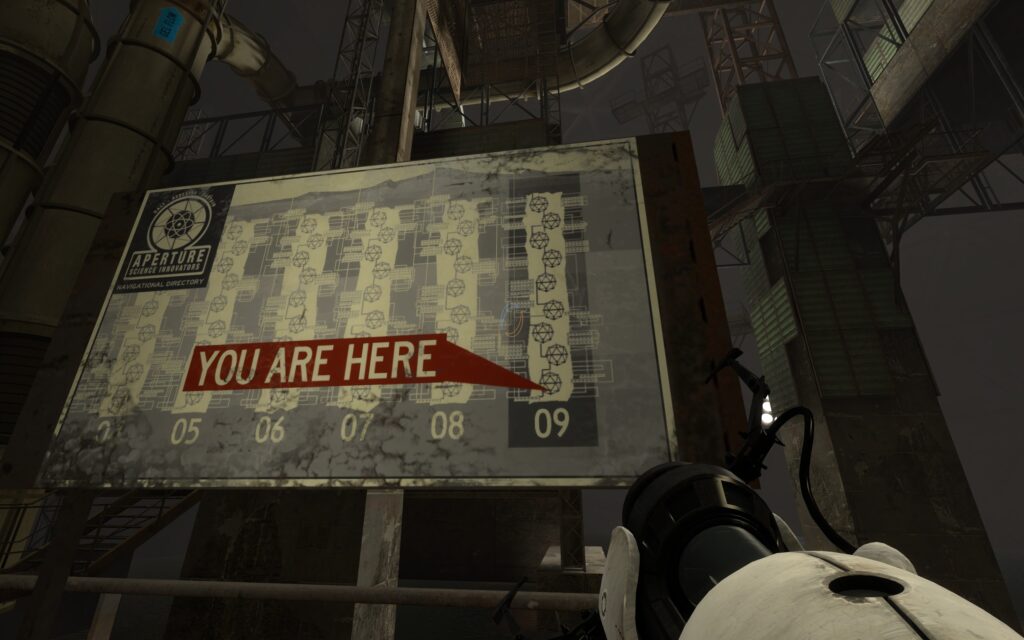
It’s a game with a perfect cast, challenging puzzles, and a great story. The ending and final fight are as epic as the first game, perhaps even more so. The last puzzle is simply genius, but I won’t take away the satisfaction you will feel by solving that one.
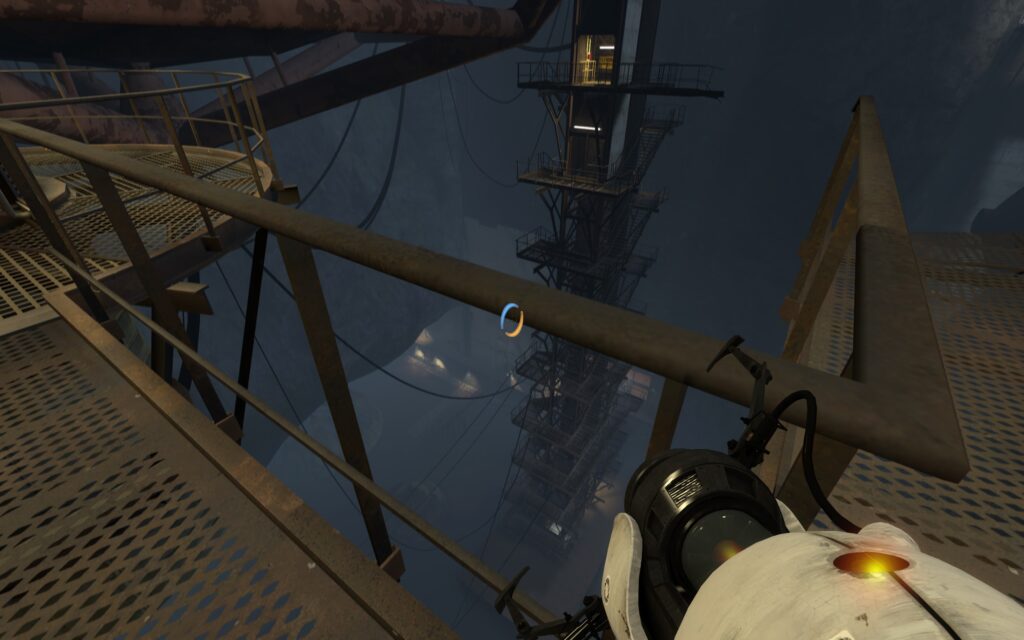
Of course, it ends with a song. It had to, of course. The first game’s song was so popular that it was expected, they couldn’t get away with not doing it. Jonathan Coulton returns for this, and it is a genuinely good song. Want You Gone was never going to be as good or as memorable as Still Alive, but I wasn’t disappointed with it.
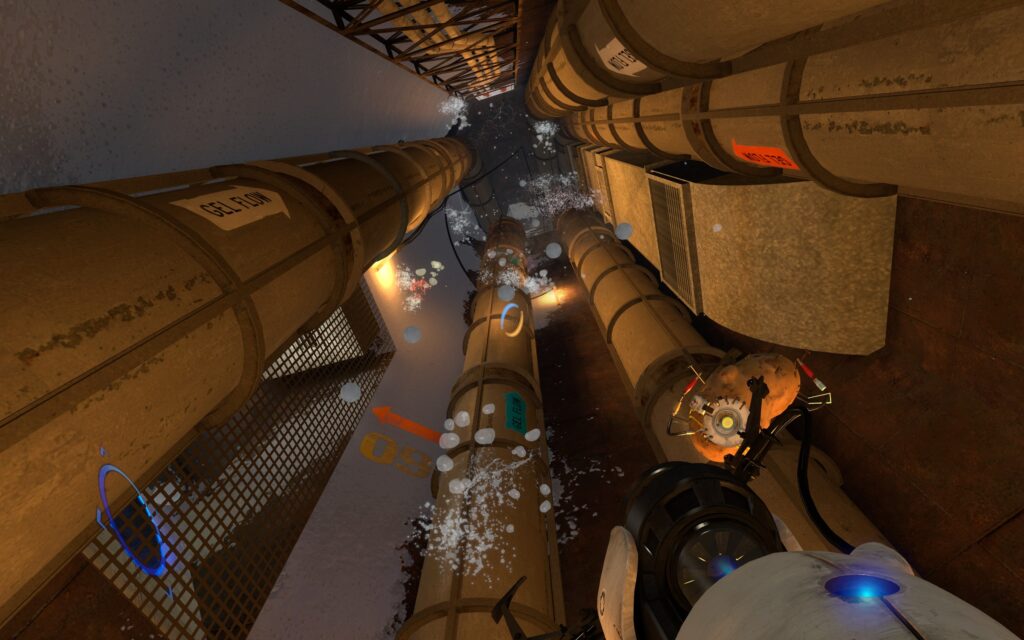
This game also introduces a co-op mode featuring two robot characters. Amazingly, the co-op mode is worked into the single player story as well. It’s basically a sequel to the single player game. A Portal 2.5 if you will. But I’ll have to wait to play that one another time.



